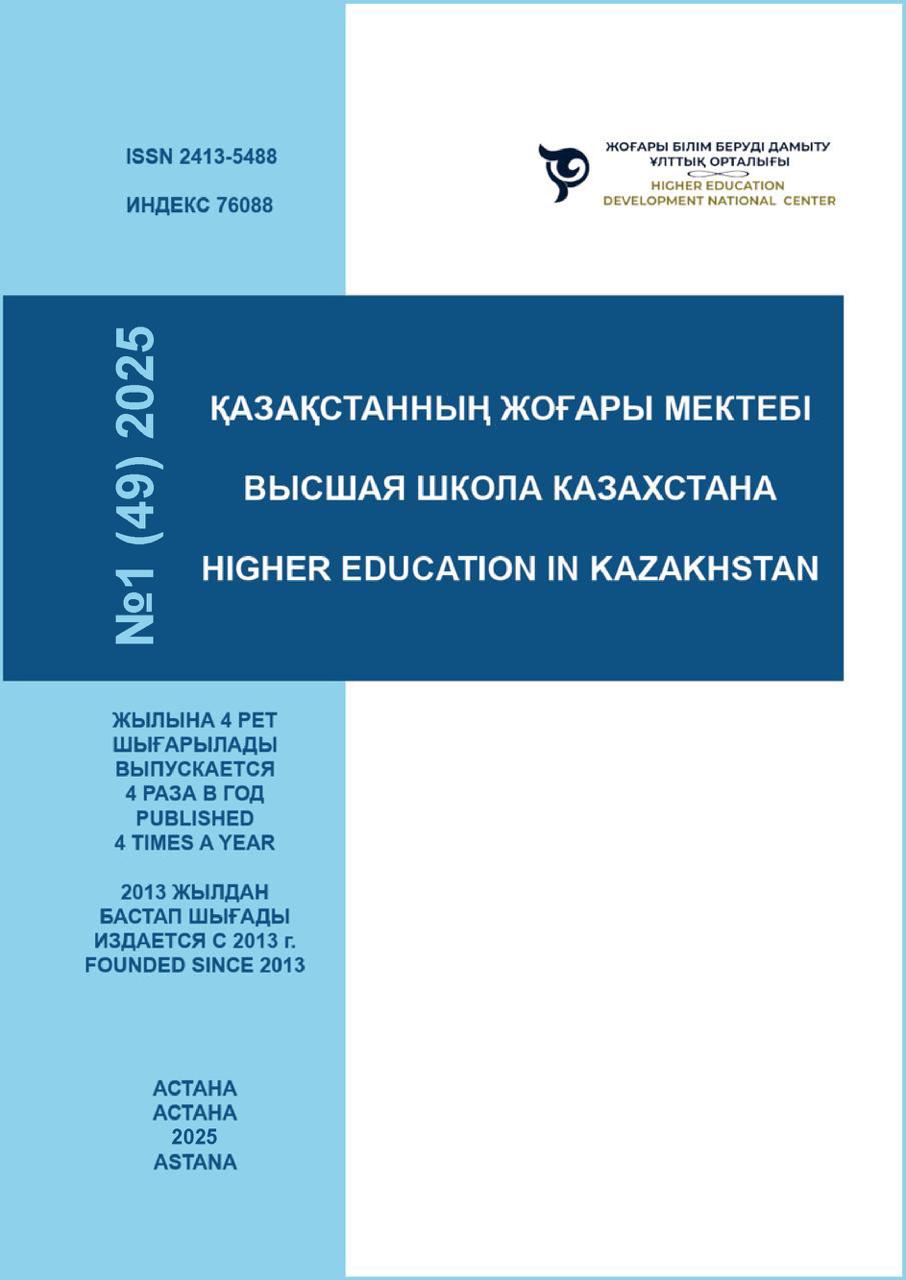TEACHING THE FUNDAMENTALS OF MOLECULAR SYMMETRY IN HIGH SCHOOL THROUGH THE USE OF THE INTERACTIVE ONLINE RESOURCE SYMOTTER
DOI:
https://doi.org/10.59787/2413-5488-2025-49-1-83-92Аннотация
: Molecular symmetry is a fairly complex branch of chemistry that requires special teaching methods, including the integration of traditional approaches with modern visualisation and modelling technologies. The article discusses the possibilities and results of using the Symotter online resource for studying the fundamentals of molecular symmetry in high school. The visual module and rich theoretical material in the resource enable students of natural science specialties to more effectively learn the fundamental concepts of molecular symmetry, search for symmetry elements, and identify point groups of molecules. The results of a three-year implementation show a positive impact on student engagement in the course as well as academic performance. By using the Symotter resource, the students’ level of mastery of the teaching material is consistently high at over 80%. A crucial role in the effectiveness of the study is played by the 3D visualization of molecular structures, symmetry elements and symmetry operations with the possibility of carrying out exercises for determining a point group of molecules both under the guidance of a teacher and independently. The resource provides invaluable assistance to both students and teachers in learning the concept of molecular symmetry.
Библиографические ссылки
Akatyev, N. V., Khamidolla, I. A., & Rakhmatullina, G. E. (2023). Chemical language in multilingual education system in Kazakhstan. Features of chemical terminology teaching and learning. Bulletin of the Karaganda university Pedagogy series, 112(4), 86–98. https://doi.org/10.31489/2023ped4/86-98
Antonoglou, L. D., Charistos, N. D., & Sigalas, M. P. (2011). Design, development and implementation of a technology enhanced hybrid course on molecular symmetry: Students’ outcomes and attitudes. Chem. Educ. Res. Pract., 12(4), 454–468. https://doi.org/10.1039/C0RP90013C
Bunker, P. R., & Jensen, P. (2005). Fundamentals of molecular symmetry. Institute of Physics.
Bunker, P. R., & Jensen, P. (2006). Molecular symmetry and spectroscopy (2. ed). NRC Research Press.
Cass, M. E., Rzepa, H. S., Rzepa, D. R., & Williams, C. K. (2005). The Use of the Free, Open-Source Program Jmol To Generate an Interactive Web Site To Teach Molecular Symmetry. Journal of Chemical Education, 82(11), 1736. https://doi.org/10.1021/ed082p1736
Chen, L., Sun, H., & Lai, C. (2015). Teaching Molecular Symmetry of Dihedral Point Groups by Drawing Useful 2D Projections. Journal of Chemical Education, 92(8), 1422–1425. https://doi.org/10.1021/ed500898p
Dagnoni Huelsmann, R., Vailati, A. F., Ribeiro De Laia, L., Salvador Tessaro, P., & Xavier, F. R. (2018). Tap It Fast! Playing a Molecular Symmetry Game for Practice and Formative Assessment of Students’ Understanding of Symmetry Concepts. Journal of Chemical Education, 95(7), 1151–1155. https://doi.org/10.1021/acs.jchemed.7b00849
Gyevi-Nagy, L., & Tasi, G. (б. д.). SYVA: a program to analyze symmetry of molecules based on vector algebra.
Hargittai, I., & Hargittai, M. (2009). Symmetry through the Eyes of a Chemist (3rd edition). Springer.
Herráez, A., & Herráez, A. (2007). Learning to use Jmol: Basic and intermediate levels (1. ed). Lulu.com.
Jmol: An open-source Java viewer for chemical structures in 3D. http://www.jmol.org/. (б. д.). [Software]. https://jmol.sourceforge.net/
Korkmaz, A., & Harwood, W. S. (2004). Web-Supported Chemistry Education: Design of an Online Tutorial for Learning Molecular Symmetry. Journal of Science Education and Technology, 13(2), 243–253. https://doi.org/10.1023/B:JOST.0000031263.82327.6e
Meyer, D. E., & Sargent, A. L. (2007). An Interactive Computer Program To Help Students Learn Molecular Symmetry Elements and Operations. Journal of Chemical Education, 84(9), 1551. https://doi.org/10.1021/ed084p1551
Pauncz, R. (2018). The Symmetric Group in Quantum Chemistry (1-е изд.). CRC Press. https://doi.org/10.1201/9781351077224
Pecharsky, V. K., & Zavalij, P. Y. (2005). Fundamentals of powder diffraction and structural characterization of materials. Springer.
Rattanapirun, N., & Laosinchai, P. (2021). An Exploration-Based Activity to Facilitate Students’ Construction of Molecular Symmetry Concepts. Journal of Chemical Education, 98(7), 2333–2340. https://doi.org/10.1021/acs.jchemed.1c00191
Rattanapirun, N., & Laosinchai, P. (2023). From Outside In: Stretching Students’ Conceptual Understanding of Molecular Symmetry with 2D and 3D Manipulatives. Journal of Chemical Education, 100(2), 1063–1068. https://doi.org/10.1021/acs.jchemed.2c01027
Savchenkov, A. V. (2020). Designing Three-Dimensional Models That Can Be Printed on Demand and Used with Students to Facilitate Teaching Molecular Structure, Symmetry, and Related Topics. J. Chem. Educ.
Sein, L. T. (2010). Dynamic Paper Constructions for Easier Visualization of Molecular Symmetry. Journal of Chemical Education, 87(8), 827–828. https://doi.org/10.1021/ed100210h
Vázquez-Vidal, L. (1996). MOLSYM: A Program on Molecular Symmetry and Group Theory. Journal of Chemical Education, 73(4), 321. https://doi.org/10.1021/ed073p321
Willock, D. J. (2009). Molecular symmetry. John Wiley & Sons.
Zambri, M. A., & De Backere, J. R. (2024). A Mobile Device Application for Visualizing Molecular Symmetry and Orbitals in Augmented Reality. Journal of Chemical Education, 101(2), 382–391. https://doi.org/10.1021/acs.jchemed.3c00652

Загрузки
Опубликован
Выпуск
Раздел
Лицензия
Copyright (c) 2025 Научно-аналитический журнал "Высшая школа Казахстана"

Это произведение доступно по лицензии Creative Commons «Attribution-NonCommercial» («Атрибуция — Некоммерческое использование») 4.0 Всемирная.













